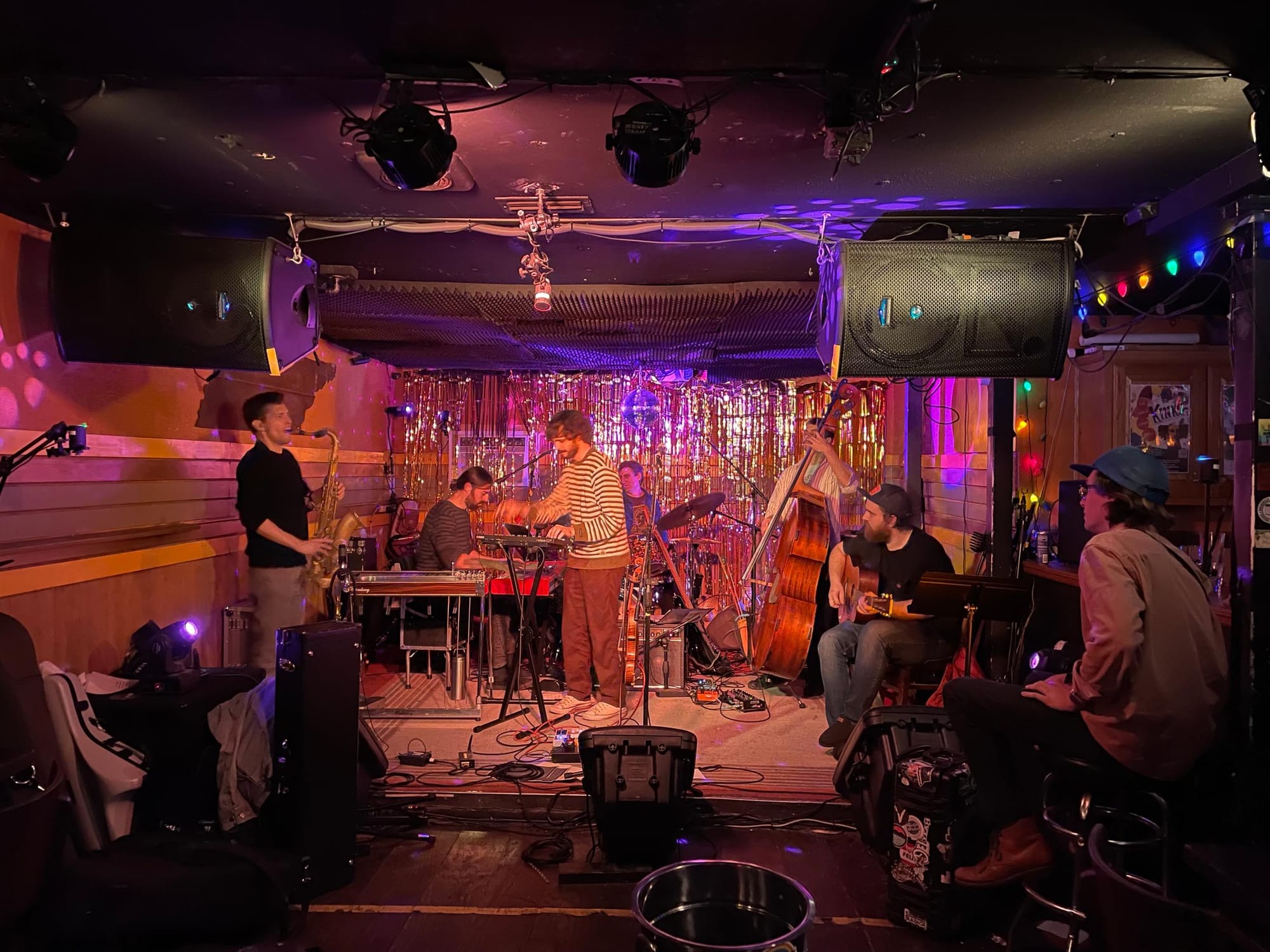Sweet Megg and John Mailander’s Forecast
Dee’s Country Cocktail Lounge
Nashville
1/28/24
“Enjoy the bar!” said the bouncer, as he stamped my hand on my way in the door of the double wide trailer. I did the ceremonial walk around the pool table and the bar stools to order a drink while surveying to see what familiar faces were in attendance, only to realize that, in fact, every face was familiar. The scenesters were out.
John Mailander’s Forecast and Sweet Megg (also known as Megg Farrell) are two separate acts that always draw their own regulars, and on the final Sunday night of January at Dee’s Country Cocktail Lounge in Madison, Tenn., the two crowds converged. The combination of Sweet Megg’s last installment of her January residency followed by Mailander and his band, meant that everyone was out to see and be seen, and engage in some community. Fans of jazz, country, acoustic, and jam band music were all in attendance.
Sweet Megg was first up on the docket. It’s a little difficult to say who exactly was in the band that evening because it was the “jazz jam” installment of Farrell 4‑week stint at Dee’s, but from what I could gather, the house band was made up of Chris Gelb on drums, Dan Hitchcock on saxophone, Paul Defiglia on keys, and Zach Cohen on bass. Themes the previous three weeks have consisted of country night, western swing night, and “weird ex-New Yorkers,” of which there are a plethora in Nashville. The jammier portions of the set were pretty standard fare: jazz standards noodled over by mostly men, but whenever Farrell took the reins back, there was a noticeable shift in the room and everything focused in. As I’ve said before about Dee’s, the sound situation makes it difficult to hear detail, which is why energy on stage matters. Dee’s is more about the feel in the room and the broad strokes of a set than any hot lick or specific sound. And Farrell, one of the premier jazz and country swing singers working in Nashville, knows how to command a stage.
As the bands switched over, the pool table was in high demand, and at one point, the bar broke out into “Happy Birthday” while someone presented a cake with candles to a friend. Mailander’s Forecast started its extensive set-up with Chris Lippencott on pedal steel and keys, Mark Raudabuagh on drums, Jake Stargel on acoustic guitar, David Willford on saxophone, Ethan Jodziewicz on bass, and at the head, John Mailander on fiddle and electronics.
Right from the downbeat, Forecast’s distinctive sound enveloped the bar. Dwelling on the concept of “genre-bending” feels a little tired at this point, but Forecast clearly pulls inspiration from many musical veins. Much, if not all, of the original music played was instrumental, and there was an abundance of space left for improvisation, despite a lot of the tunes being through-composed. The various influences were so blended that pointing to specific examples in the sound is quite difficult, but jazz fusion and new acoustic music are two clear influences. Mailander also often plays with Bruce Hornsby, which is a detectable element of the sound as well. It’s almost like a fusion of various fusion genres that sometimes leans jam band. The constant of the band’s sound, however, was what I might describe as the sound of triumph. Sweeping and soaring lines in the slower tunes sat next to the bouncy and jubilant melodies of the more upbeat pieces to create an overall atmosphere of joy. Sure, the band created a lot of delightfully dirty sounds through the use of electronics and extended techniques, but the takeaway is more exploratory than brooding.
The combination of the two acts was quite complimentary. Even though their shows have fundamentally different sounds and attendees, Mailander’s very improvisatory music had deep roots in jazz, and his personal background as a bluegrass fiddler and deployment of the pedal steel guitar fit well with some of Farrell’s more country leanings. All in all, the night was one of convergence, in both musical influences and audiences.





